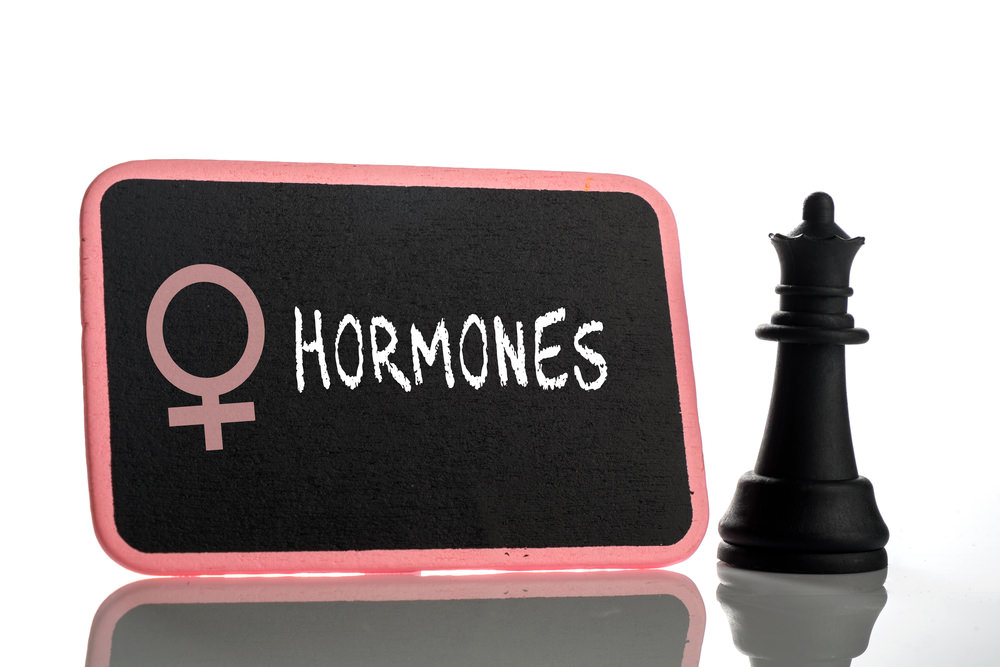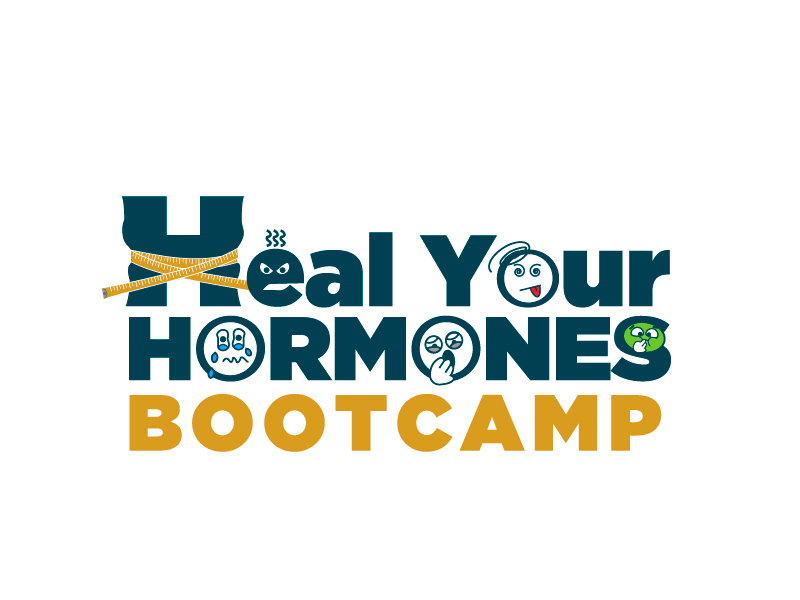
Female hormones and their sites
A quick observation at a male versus a female body tells you right away something is different. While we can certainly recognize the obvious, we ignore these differences when we talk about diet and exercise for fat loss. The standard health and fitness advice of eat less and exercise more often does not work once people get out of their twenties and into their thirties, forties and beyond, and women are especially impacted.
So what are the difference between men and women, what determines where women store fat, and what can women do to address the fitness and fat loss issues that are unique to them?
The differences between men and women:
Women usually have smaller waists and more fat storage on the hips, thighs, and breasts. Estrogen and progesterone have much to do with this.
Estrogen is largely responsible for greater fat storage around the hips and thighs while both estrogen and progesterone impact larger breasts.
Because wom en experience monthly hormone fluctuations through the menstrual cycle, they know from experience that hormones impact how they feel, function, and look. They seem to intuitively get the fact that hormones play a role in determining whether they store fat or burn fat and where on the body it is lost or gained. To understand why women are so different, you have to understand their hormones.
Brief review of the menstrual cycle.
No discussion of female fat loss can take place without understanding the normal female menstrual cycle. The first day of bleeding for a woman represents day one of the menstrual cycle.
The menstrual cycle can then be divided into two phases, the follicular phase (named for the maturing of the ovarian follicle) and the luteal phase (named for the corpeus luteum which ovarian follicles become after ovulation). Ovulation, the release of an egg from the ovaries separates these two parts of the cycle.
The follicular phase is associated with higher estrogen levels compared to progesterone, while the luteal phase is the reverse. The relative ratios of these two hormones can have an impact on female related fat loss and health.
Estrogen and progesterone balance
A key fat loss measure in women is the estrogen and progesterone balance and how those hormones interact with other hormones like cortisol or insulin. Bigger hips and thighs on a women suggest greater estrogen levels relative to progesterone. The reverse of that, larger breasts and smaller hips and thighs, MAY indicate the opposite balance of these hormones.
The menstrual cycle is another key indicator of hormone balance. Since the time just before menses is usually a progesterone dominant time, PMS is a strong indication there is a progesterone deficiency relative to estrogen.
A woman can have higher than normal progesterone levels but still have a relative deficiency if estrogen levels are much higher in comparison. Many women with low progesterone relative to estrogen will report feeling like a completely different person before ovulation (the first two weeks of cycle) vs. after ovulation (last two weeks of cycle), where they feel much worse. This ill feeling usually manifests as depression, breast tenderness, moodiness, fatigue, lack of motivation, bloating, and other complaints.
Female fat distributions
Progesterone & estrogen both play a role in keeping the waist of women smaller. This is because estrogen works against the action of insulin (and testosterone a belly fat storing hormone in women) while both estrogen and progesterone oppose the action of cortisol. Insulin and cortisol, together with testosterone and low estrogen, are implicated in belly fat deposition in women.
Estrogen is the biggest factor in increasing fat storage at the hips and thighs providing the hour-glass shape. Progesterone with estrogen halts the storage of fat around the waist, but stress can have more of a negative impact on progesterone’s action. High stress has been shown to negatively impact progesterone, so women who see fat accumulating around the waist may want to work to reduce stress and raise progesterone.
Estrogen is a little different. Estrogen works to increase fat storage by up-regulating what is known as alpha-adrenergic receptors in female fat depots around the hips and thighs. Adrenergic receptors are like the gas and brake peddles on your car and work to accelerate or decrease fat usage. Beta-adrenergic receptors increase fat burning while alpha adrenergic receptors block it. The hips and thighs of a woman have higher amounts of alpha adrenergic receptors compared to men. This is also the major reason it is so difficult for some women to lose fat from the hips and thighs.
It is interesting to note here that one of the best ways to decrease the action of these alpha receptors is by using a low carb diet. This is why many women find fantastic results when they switch from the standard high carb diets and adopt more low carb eating patterns.
Many women have plenty of fat to spare in the hips and thighs but instead of burning it, they will become smaller in the torso and breast first and remain bigger on the bottom. This is a very frustrating scenario for many. Estrogen increases alpha-adrenergic receptor numbers while progesterone decreases it. Progesterone, like testosterone in men, MAY increase beta-adrenergic receptors. In this way, estrogen and progesterone work to influence the ability to burn fat and determine from which areas it will be taken from. This is an issue of hormone balance not calories.
Female hormone changes: age, lifestyle, and the environment

Female hormones have a great contribution to loosing weight
Women are often duped into believing the low calorie diet and aerobic exercise myth. This approach to weight loss rarely works and often creates damage to their body as a consequence. As a woman ages, as a consequence of stress, or because of environmental estrogen mimicking compounds several things begin to occur. The ovaries decrease their production of estrogen and progesterone. This exacerbates estrogen and progesterone balance, further pushing the body more towards estrogen dominance.
There are also many estrogen mimickers in our food and environment. At the same time, fat cells continue to produce estrogen through an enzyme called aromatase present in fat cells. This also leads the estrogen/progesterone balance to shift more towards estrogen. At the same time slimming and muscle building hormones, like human growth hormone (HGH) and DHEA, decline. Together this creates the perfect storm for female related fat gain and most of it occurs in the mid-section.
DHEA, HGH and progesterone are all hormones that act to keep a woman lean and block the storage of fat in the middle of her body. The tricky part is that a low calorie diet and a focus on aerobic exercise makes this worse because they do nothing to restore these powerful hormones and may actually worsen the estrogen progesterone imbalance in the long run.
Solutions to the problem:
Women should be focused on eating more of the right things and exercising smarter. This means eating higher amounts of vegetables and “estrogen free protein as well as engaging in weight training over cardio. There are only three ways to reliably restore HGH in the body: sleep, adequate protein, and intense exercise using weights.
Weight training is perhaps the most important aspect of this and is critical for female health especially to stop the belly fat that accumulates during aging. HGH is to women what testosterone is to men. It keeps them looking young, lean, and firm. Once progesterone levels fall due to stress, menopause, or other factors, HGH is all that is left to keep belly fat in check
Women falsely believe less intense exercise like walking and yoga will give them the desired “look” of their younger years. While these activities are exceedingly healthy, they will not be adequate to generate the hormonal effect needed to raise HGH. However, they will work synergistically with more intense exercise to lower the negative impact of cortisol.











